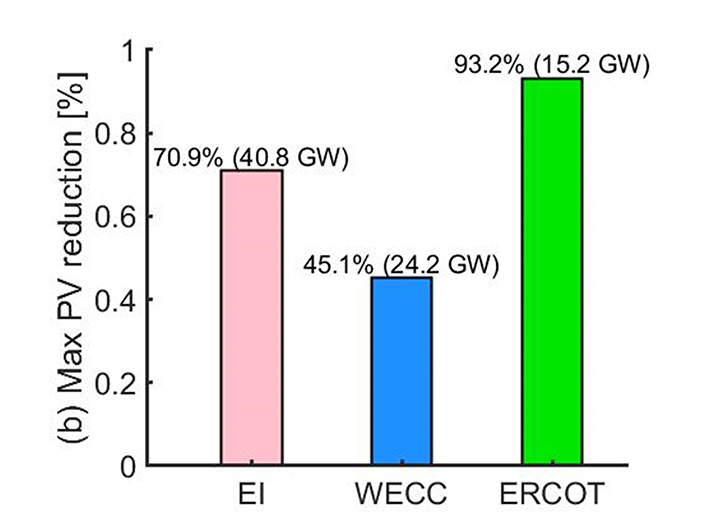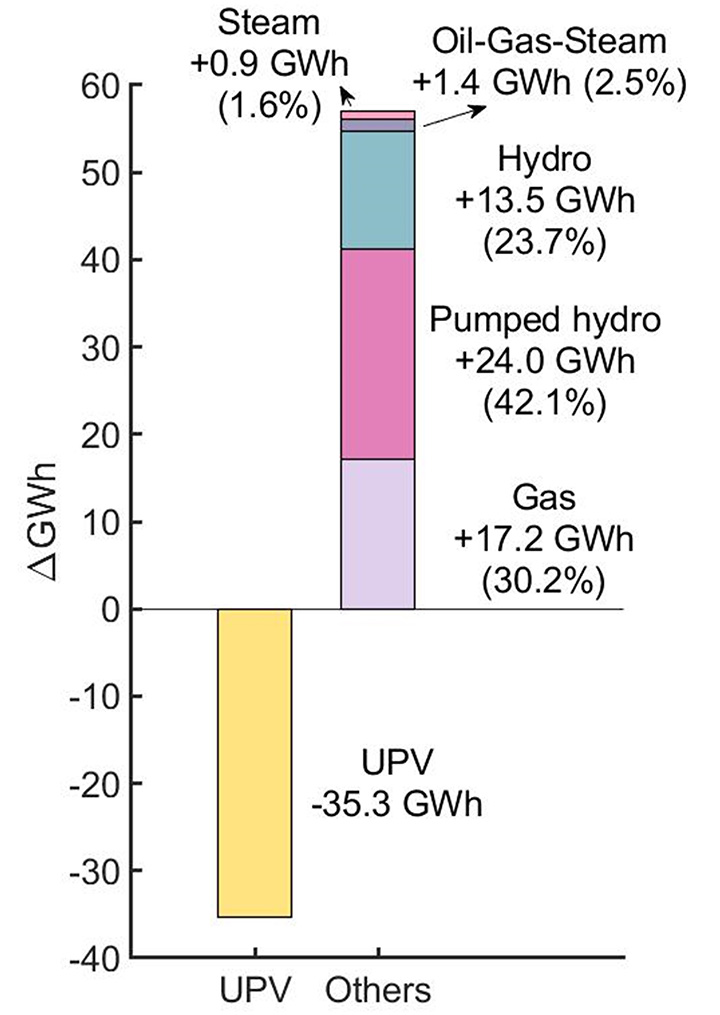NREL Shows Live Grid Impacts From Total Solar Eclipse
Even a Few Minutes Without Sunshine Reduced Solar Generation on April 8, 2024—Find Out How
On April 8, 2024, a total solar eclipse traversed North America bringing a period of midday complete darkness to 12 U.S. states and affecting solar power plants across all 50 U.S. states. The U.S. Department of Energy Solar Energy Technologies Office, the National Renewable Energy Laboratory (NREL), and the North American Electric Reliability Corporation partnered to evaluate the grid impacts of the eclipse.
An NREL livestream during the eclipse looked at how the power grid is impacted by the loss of solar generation and how that reduction of generation is managed at the regional and interconnection levels. Viewers saw exactly what the NREL control room was seeing in near real time, including current information from independent system operators such as current generation mix and changing energy demand as the eclipse traversed the country. The livestream coverage ran for the entirety of the eclipse.
This animation shows the expected loss of solar generation as the eclipse traverses a map of the United States.
The United States just had a total solar eclipse in 2017, right? So, what might have been different this time around?
"Total solar installations in the U.S. have increased threefold in the last seven years," explained Guohui Yuan of the Solar Energy Technologies Office, which sponsors this study. "On a typical spring sunny day, solar photovoltaics will generate about 30% of the electricity used in Texas."
As solar energy makes up a larger and larger share of our electricity generation, it is important for system operators to know how to meet customers' energy needs despite celestial or weather-induced reductions in solar irradiance. The current study expands on prior research completed for the 2017 eclipse.
Eclipses can be predicted for millennia, but other disruptions come with less predictability. For example, storms or the smoke from wildfires may obscure the sun across large regions.
"The methodology from NREL's eclipse study is applicable to any extreme weather event," said the study's principal investigator, Jin Tan.
NREL researchers have calculated the maximum power reduction from solar photovoltaics on April 8 in all three interconnection areas in the United States. As the eclipse cut a path from Texas to Maine, they expected a 71% peak power reduction in the East, 45% in the West, and 93% in the Texas grid, called the Electric Reliability Council of Texas (ERCOT). Due to the number of solar power plants in the Eastern Interconnection, this region experienced the largest reduction in overall power that would otherwise be generated from the sun. However, the impact in ERCOT is much higher in terms of percentage of reduction. The analysis goes deeper, as researchers modeled every independent system operator region and individual balancing areas (roughly on a utility-by-utility scale) across the country.
Maximum PV Reduction

Researchers measured the anticipated reduction in solar power on April 8 in the three interconnections of the U.S. power grid. EI is the Eastern Interconnection, WECC is the Western Electricity Coordinating Council, and ERCOT is the Electrical Reliability Council of Texas.
"A systematic study of the impacts of the eclipse will provide valuable insights for grid operators across the country as they prepare for extreme weather events," said Marilyn Jayachandran of the North American Electric Reliability Corporation, a collaborator on the study.
The April 8 eclipse was unique in its impact on many major population hubs in the United States, with 32 million people experiencing complete darkness in the middle of the day. The sun was blocked from view for about 4 minutes, the period known as "totality," but was partially covered for up to 3.5 hours, and even areas far outside the path of totality experienced some level of reduced solar output.
System operators also expected an increase in electricity demand across many population centers due to a reduction in rooftop solar generation. Cities with a higher adoption of rooftop solar saw a more significant impact. The impact to cities within the totality may be even more notable given the number people who traveled to these cities to view a once-in-a-lifetime event.
Furthermore, system operators needed enough flexibility in generation resources to meet a fast generation ramp rate. The ramp rates during the eclipse were expected to be two- to three-times higher than typical dawn and dusk ramp rates.
Generation Dispatches

No load went unserved during the eclipse. The generation that would typically come from solar arrays was covered by other sources. The reduction in rooftop solar is not covered by these figures.
Due to the flexibility of a diversified energy system, no one's electricity was cut short on the day of the eclipse. Researchers expected solar energy to decrease by 35.3 gigawatt hours on April 8, assuming mostly sunny conditions across the country, yet the load was rebalanced primarily by pumped hydropower storage (42%) and hydropower (24%), along with gas (30%), and a combination of oil-gas-steam (2%), and steam (2%).
The modeling framework is informed by diverse, multidisciplinary data on meteorology and geography, in addition to electrical load, solar irradiance, wind energy, and more. Only combined can the researchers deliver an accurate grid impact analysis. Data was drawn from Lawrence Berkeley National Laboratory, the Solar Energy Industries Association, the United States Geological Survey, the Energy Information Administration, and the National Aeronautics and Space Administration.
Following the solar eclipse, NREL will conduct post-event analysis on the performance of the power systems during the eclipse and successful mitigation measures taken by grid operators and publish the findings in a technical report.
The research team summarized findings of the eclipse grid impacts study in a webinar on April 2, 2024. Visit the website to learn more about the study and view a recording of the webinar.
Last Updated May 28, 2025
